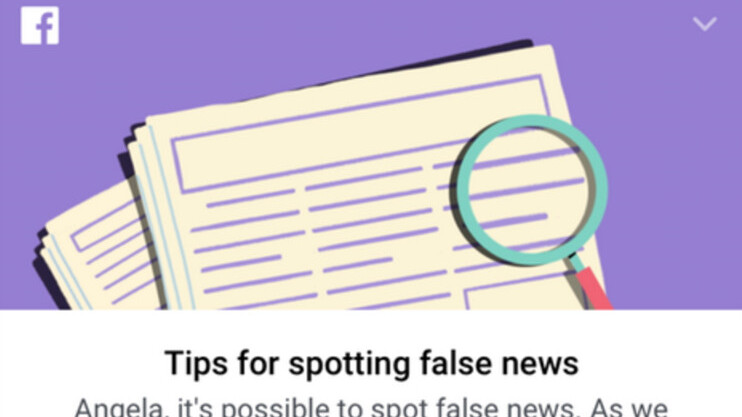
Facebook has taken a few steps to identify and flag fake news so far, but now it’s aiming to actually educate people on how to avoid it.
The company is adding an alert to the top of your News Feed dubbed “Tips for spotting false news,” which will apparently show up several times over the next few days. Click on it, and you’ll be taken to a support page with some common sense, but useful advice:
- Be skeptical of headlines. False news stories often have catchy headlines in all caps with exclamation points. If shocking claims in the headline sound unbelievable, they probably are.
- Look closely at the URL. A phony or look-alike URL may be a warning sign of false news. Many false news sites mimic authentic news sources by making small changes to the URL. You can go to the site and compare the URL to established sources.
- Investigate the source. Ensure that the story is written by a source that you trust with a reputation for accuracy. If the story comes from an unfamiliar organization, check their “About” section to learn more.
- Watch for unusual formatting. Many false news sites have misspellings or awkward layouts. Read carefully if you see these signs.
- Consider the photos. False news stories often contain manipulated images or videos. Sometimes the photo may be authentic, but taken out of context. You can search for the photo or image to verify where it came from.
- Inspect the dates. False news stories may contain timelines that make no sense, or event dates that have been altered.
- Check the evidence. Check the author’s sources to confirm that they are accurate. Lack of evidence or reliance on unnamed experts may indicate a false news story.
- Look at other reports. If no other news source is reporting the same story, it may indicate that the story is false. If the story is reported by multiple sources you trust, it’s more likely to be true.
- Is the story a joke? Sometimes false news stories can be hard to distinguish from humor or satire. Check whether the source is known for parody, and whether the story’s details and tone suggest it may be just for fun.
- Some stories are intentionally false. Think critically about the stories you read, and only share news that you know to be credible.
It’s worth noting that – as pointed out by TechCrunch – Facebook uses the term ‘false’ instead of ‘fake’ because ‘fake news’ has taken on its own distorted meaning often referring to stories people believe aren’t worth reporting on instead of actual apocryphal stories.
It’s a simple but welcome addition. As much as the tips in the list seem obvious, I can’t tell you how many times a day week I see people sharing satire stories they think are real, only to be called out on it later.
There’s no way a simple list like this is going to stop people from sharing fake stories – that’s why Facebook is trying to address the epidemic in other other ways – but hey, at least it’s something.
Get the TNW newsletter
Get the most important tech news in your inbox each week.




